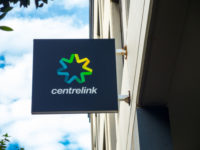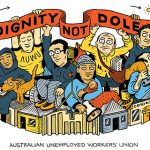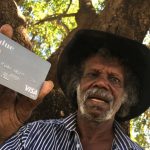Desperate and Hungry: Struggling to Survive on Newstart

In a raw series produced by the Guardian Newspaper earlier this year called “On the Breadline,” a group of Australians opened up, telling their own personal stories of what it’s like to be struggling to make ends meet.
What most of these stories have in common is a reliance on Government benefits to get by.
Now, a new survey released by the Australian Council of Social Service (ACOSS) backs up those stories with some fresh data. And it’s not pretty. It shows that a massive 84% of Newstart recipients skip meals regularly because they can’t afford to eat.
Of those, 30% said they missed between three and four meals each week. A further 13% go without food at least eight times a week.
Sixty-six percent don’t use heating in winter. Many go without daily showers to save money. More than 60% said they had not seen a dentist in at least two years.
Below the poverty line
Overall, the survey shows that people are living on or below the poverty line. They can’t afford rent, food, energy, clothing, transport, haircuts, proper healthcare or internet access, which, as ACOSS Chief Executive Cassandra Goldie, points out “severely hampers their chances of getting a job, especially as there is only one job available for every eight people looking.”
And, acting as a stop-gap between jobs so people can get back on their feet, and into gainful employment, is precisely the point of Newstart, a payment of about $277.85-per-week. As the Centrelink website states, Newstart allowance is “the main income support payment while you’re unemployed and looking for work.”
But figures also show that Newstart is not necessarily a short-term measure, and that many recipients are on the Newstart allowance for long periods, the average time is between 2-3 years. Many have minimal savings to begin with, if at all.
While single, childless Newstart recipients who receive the base rate are commonly thought to live on $40 a day, the figure does not take into account bills and other expenses. After paying for housing, the majority (nearly 60%) reported they had less than $100 left for the week. A further 39% reported having $50 or less.
A separate Salvation Army report has found the situation is actually more dire and that people on Newstart live on $17 a day on average, after accommodation costs.
Newstart is below average compared to other countries
Further analysis conducted by Professor Peter Whitford of the Australian National University earlier this year compared Australia’s Newstart payment to other countries, found it was “below the OECD average”, behind countries such as New Zealand, France, Germany and the UK.
As such, it has the potential to trap people into a cycle of poverty that can be exceptionally difficult to get out of.
Push for an increase
ACOSS is just one agency currently lobbying the Government to increase the allowance. But so far the Morrison Government has fended off calls for a $75 a week increase to the unemployment benefit, despite mounting pressure.
Labor joined the Greens Party last week pushing for a senate inquiry into Newstart. However the Finance Minister Mathias Cormann has responded saying any changes to welfare would be determined on what was affordable for the budget. He also claims that 99% of Newstart recipients also receive other welfare payments.
But as anyone dealing with Centrelink will know, trying to navigate the system and in particular gaining access to personal assistance, is time-consuming and particularly stressful.
For welfare recipients who need to justify all their expenses, and detail their efforts at seeking a job, getting caught in the system is not only frustrating but draining. In the last financial year, 48 million calls to Centrelink went unanswered. What’s more, if any payments get muddled up in anyway, under the new Robo-debt system, trying to prove your case can result in an endless round of uncertainty, and what’s more you could end up with a debt you’re unable to pay.
The Newstart payment has remained stagnant for more than two decades. However, experts have found that boosting the payment $75 per week (at a cost of about $3 billion to the overall economy), would not only take the stress out of day-to-day living for those people receiving the benefit, it would also benefit the economy.
A report produced by Deloitte Access Economics last year also found that increasing the Newstart allowance by $75 per week would lead to a boost in consumer spending and create more than 10,000 jobs across Australia.
For many it’s difficult to understand the Morrison Government’s seemingly immovable position as anything more than heartless politics, particularly given the salaries that politicians themselves earn and retire on.
The fact of the matter is that wages are high in Australia, and while so is the cost of living, there are more incentives to actually find a job than try to live on the Newstart allowance week by week. The problem is though, there are many more unemployed people than jobs available therefore many people need to rely on Newstart to survive, for the foreseeable future. But they’re hardly kicking up their heels and having a good time, they’re struggling across all areas of the social spectrum and are in serious danger of decline without sufficient money to get by on.







